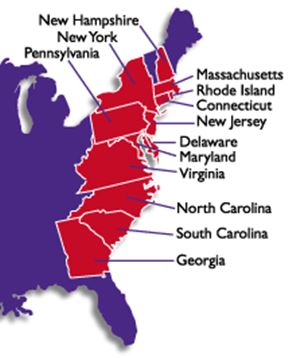
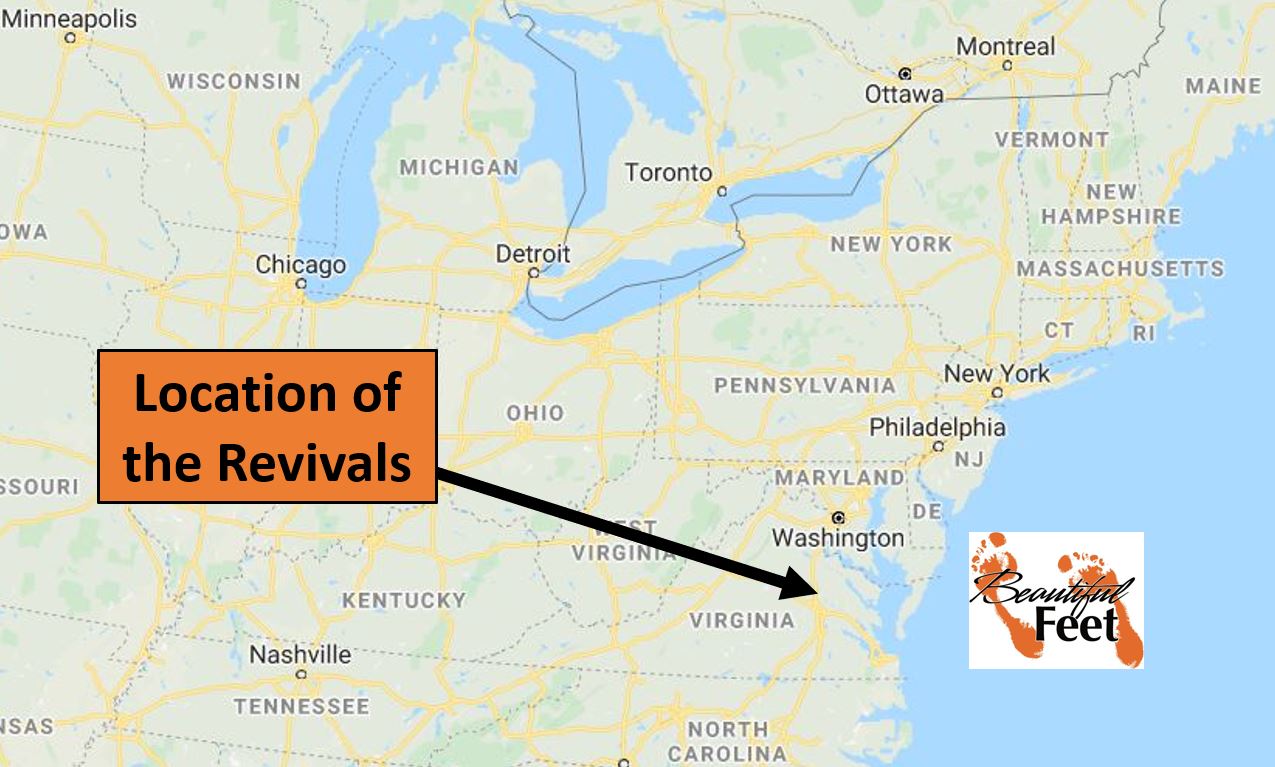
Background
This revival account occurred during the First Great Awakening (1730s-1740s), which included numerous local and regional revivals breaking out in many locations throughout the American colonies.
A leading figure in this account is William Robinson, an immigrant from England. With him not leaving memoirs of his life or any other writings, we only have the following information about him:
► He was a teacher at a school in New Jersey and Delaware.
► He was converted to Christ sometime after his arrival in America from England.
► He became a Presbyterian upon his conversion and attended the rustic yet renowned Log College, a precursor to Princeton University.
► He was licensed to preach by the Presbytery of New Brunswick.
► He was ordained as an evangelist by that same presbytery.
► He was an itinerant missionary among the early settlers in Virginia.
► He was mentioned as being called “the one-eyed Robinson,” as he was blind in one eye.
► Following the 1743 Virginia Revival, he ministered in the states of New York and Maryland.
► It was said that during his short lifetime, he “was the instrument in the conversion of as many souls as any minister who ever lived in this country.”
► He never married.
► He had no family members in the colonies.
► His burial place is unknown.
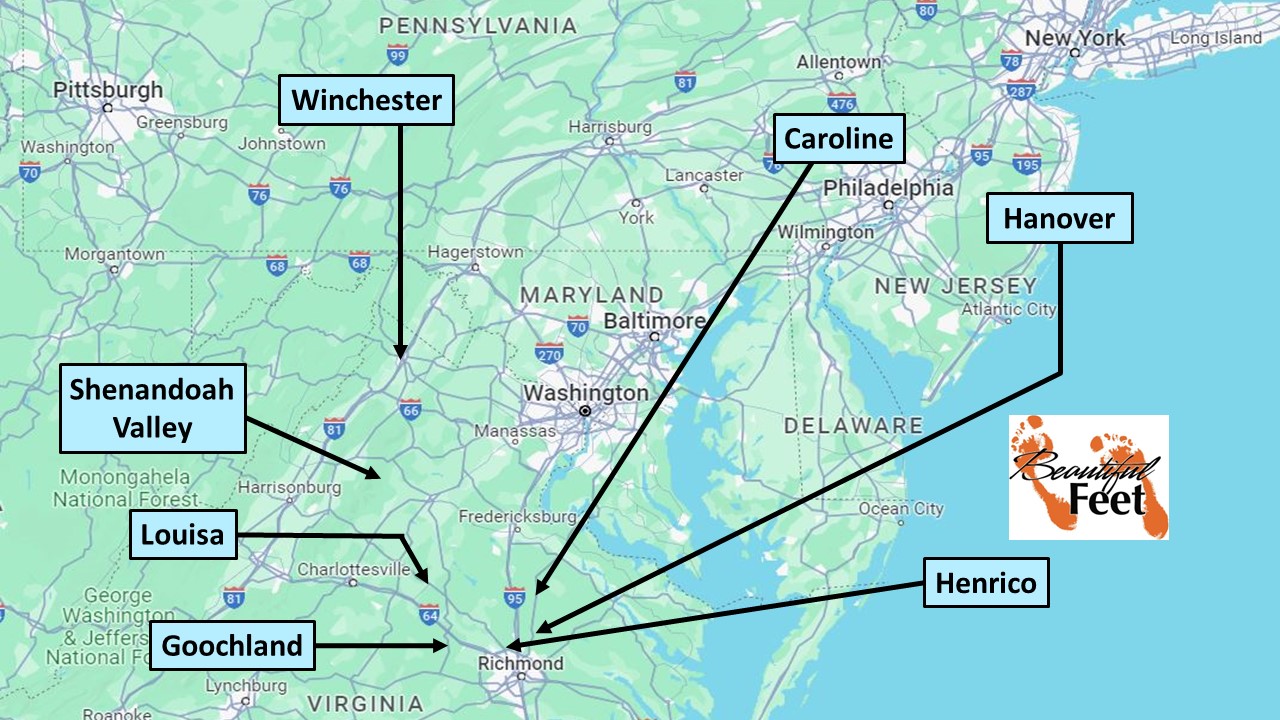
Some of the locations mentioned in this account
Missionary Tour of William Robinson
Having been ordained as an evangelist, Robinson set out for the Virginia settlements of colonists, especially areas where there were no churches. After his entry into that colony and having obtained permission from government leaders in Winchester, Virgina, to conduct a missionary tour, he travelled through the Shenandoah Valley, as well as the following counties: Hanover, Henrico, Carolina, Louisa, and Goochland, preaching in settlements along his journey.
Through his travels, he experienced significant evangelistic success, and
Sinners were awakened and converted, and the people of God were greatly strengthened and comforted.
Revival in Hanover
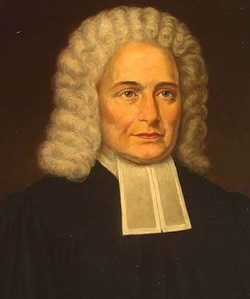
Samuel Davies: 4th President of
Princeton University
On June 28, 1751, years after the Hanover Revival, the renowned Rev. Samuel Davies, who ministered in Hanover, Virginia from 1748-1759, wrote a letter to a New England friend, detailing that revival movement. He referred to it as the “marvellous works of the Lord among us.” It is from this letter we get the following information about the revival in Hanover.
Godlessness Flooded the Colony
Prior to the 1743 Revival in Hanover, Davies wrote of a low state of concern for the Church in the region.
► There was a negligence in attending church services.
► For those that did attend, there was a lack of concern about eternal things.
► Family prayer and Bible reading in homes were rare.
► Vices of all sorts were common among the people of the area.
A Few Laid the Foundation to the Revival
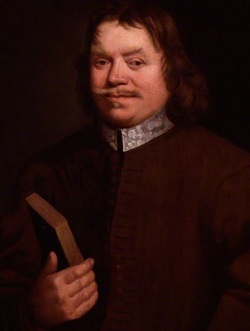
John Bunyan:
author of the
“The Pilgrim’s Progress“
Prior to the revival, there were a few individuals living in a revived state. In these newly settled areas, where churches or trained ministers were scarce, these few drew strength from the writings of men such as Robert Bolton, Richard Baxter, John Flavel, and John Bunyan.
Evangelistic Efforts of Samuel Morris
Samuel Morris was one of those who were converted to Christ prior to the 1743 Revival, and it was his zealous efforts that became the spark to the revival. Despite lacking a theological education, Morris’s efforts involved reading to small groups of people, specifically from “Luther on the Galatians,” “Luther’s Table of Discourses,” and sermons and writings from John Bunyan.
Although Morris’s efforts did not lead to a massive turning to Christ among the early settlers, Davies credited Morris as being “the principal private instrument of promoting the late work.” Davies then included, in the letter to his friend, Morris’s personal narrative of what took place, which we include here in an abbreviated form.
Account of the Revival from the Hand of Samuel Morris
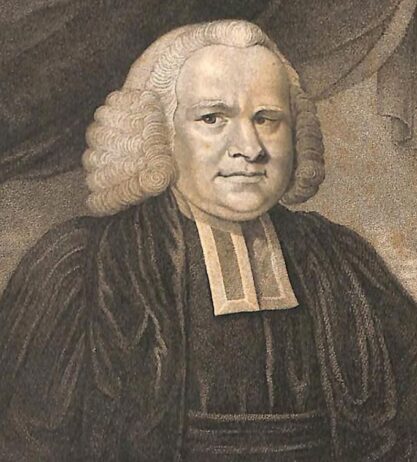
English Revivalist,
George Whitefield
In the year 1743, Samuel Morris obtained a book containing the sermons of George Whitefield. He took those sermons and held public readings in his home in Hanover, inviting neighbors to attend. The simple reading was accompanied by the power of God, bringing conviction of sin and a deep desire to be set free from that guilt.
Large numbers were gathering every Sunday to hear these sermons being read. Additionally, Morris frequently conducted readings throughout the week. The results had a tremendous impact, with Morris writing:
The concern of some was so passionate and violent, that they could not avoid crying out, weeping bitterly…
Building of a Meetinghouse (church)
It wasn’t long before Morris’s home became too small for the crowds that would gather. They then built a meetinghouse, which was exclusively used for reading sermons and portions of books. With none of the people having experience leading open and extemporaneous prayers, none were attempted.
When the report of the readings spread throughout the region, Morris was invited to other locations a considerable distance away to read his collection of sermons, and it was through this means that the revival began.
Colonial Laws on Church Attendance
At this time, the Church of England was the official church in the Colony of Virginia, with mandatory laws for church attendance. When Morris absented himself from church services to conduct readings, he was taken to court to declare his denomination. Not knowing what to declare, he said, “Lutheran,” because he had been reading from Luther’s works.
Not long after this, William Robinson arrived in Virginia, and he was invited to come and preach at the Hanover meetinghouse.
On July 6, 1743, Robinson preached his first sermon at the Hanover meetinghouse and continued every day for four days. The congregation was large on the first day, and it increased each succeeding day. Of that time Morris commented:
Such of us as had been hungering for the word before, were lost in an agreeable surprise and astonishment and some could not refrain from publicly declaring their transport: we were overwhelmed with the thoughts of the unexpected goodness of God, in allowing us to hear the gospel preached in a manner that surpassed our hopes.
During Robinson’s brief stay, he taught the people to sing psalms and pray when they gathered, which they had previously omitted. Following this brief series of meetings, Morris was invited to many locations, some up to 40 miles away, to read sermons.
The reading of these sermons had a powerful affect, and many turned to God, leading to the construction of more meetinghouses. Readers were then chosen from among these distant congregations, and with more sermons being read in more areas, the work spread rapidly.
Religious Persecution in the Colony
In 1748, Rev. Samuel Davies arrived in Hanover County and helped carry the revival forward by claiming freedom of worship using the English Act of Tolerance law for the Presbyterians and other denominations. Prior to this, the Anglican Church (Church of England), and the supporting government officials, were not favorable toward those outside the Anglican Church, and were often hostile toward them, fining individuals for various religious infractions that were not in alignment with their church.
Read two other revival accounts during the mid-1700s:
► 1748 Revival Among Virginia’s Enslaved
► 1758 Ministry Among Native Americans
Sources
► A Commentary on the Galatians by Martin Luther
► Biographical Sketches of the Founder, and Principle Alumni of the Log College. Together with an Account of the Revivals of Religion, Under their Ministry: Collected and Edited by Archibold Alexander
► Dr. Martin Luther’s Divine Discourses by Martin Luther
► Letters from the Rev. Samuel Davies, and others by Samuel Davies
► The Pilgrim’s Progress by John Bunyan
► Religion in Colonial America by World History Encyclopedia
Return to List of Revival Stories
Chet & Phyllis Swearingen:
Office: (260) 920-8248
romans1015@outlook.com
Beautiful Feet
P.O. Box 915
Auburn, IN 46706


